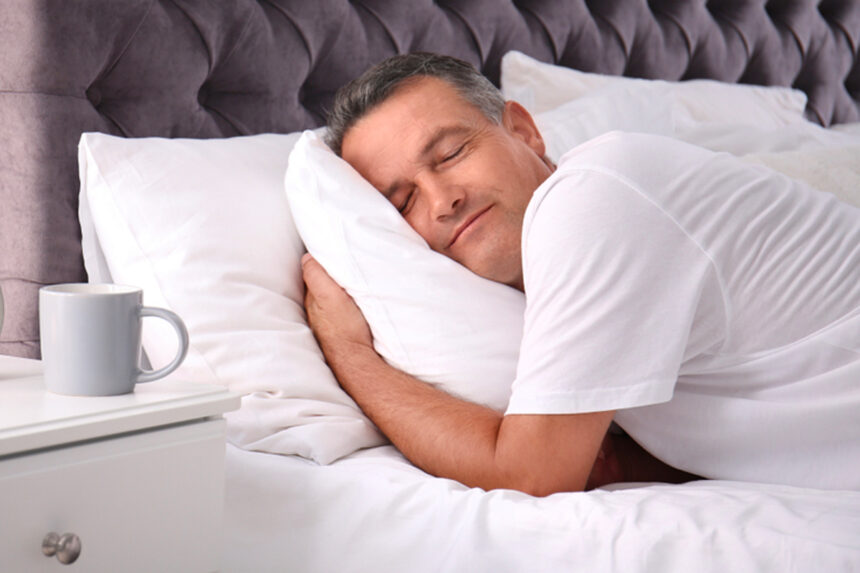With age, sleep becomes more superficial and intermittent. Sensitivity to irregularities, pressure and temperature increases, and joints and muscles require more delicate support. Therefore, the sleeping place should not just be “comfortable” – it should work for health. Often, not even the elderly themselves, but their relatives think about which mattresses are best for the elderly, so as not to suffer from joint or back pain in the morning.
How Sleep Changes With Age
Sleeping at 60 and sleeping at 30 are completely different things. The older a person is, the easier it is to wake him up. Someone opens their eyes at the slightest rustle, someone just because they turned around. The deep phase of sleep is shortened, but there are more awakenings during the night. It is not easy to fall asleep again, especially if something bothers you: your back aches, your arm goes numb, or the room suddenly becomes hot. In general, the rest of the elderly becomes more sensitive and shorter, although the need for sleep does not decrease. There are many medical studies about this
Note: Looking for the latest single mattress price in Pakistan? Just head over to our website!
Changes in sleep with age: deep sleep decreases, awakenings become more frequent, and sensitivity to posture and temperature increases.
Physical nuances are added to this. Many people have pain in the back, knees, shoulders. Joints react to an uncomfortable posture, and the spine requires a softer, supportive surface. Blood vessels become more sensitive, so a mattress that is too hard causes numbness, and a mattress that is too soft does not support the back in a comfortable and healthy position.
Even with age, a person begins to feel cold or heat more acutely. Sometimes he sweats, then on the contrary, his feet freeze. Even a slight bump under the back can interfere with sleep. Therefore, the requirements for the bed change with age: it should help to relax, not interfere with the body’s recovery and take into account every little thing from density to temperature.
Which Mattress Is Suitable For The Elderly: Expert Opinion
Gerontologist on the main thing: what is important for the body with age
“The perfect mattress adapts to the body – it doesn’t fall through, but it doesn’t press either. It’s like sitting comfortably in an armchair: not too soft so as not to fall through, and not like on a stool. Such a mattress helps to improve blood circulation, relieves the back and reduces pain, especially in the lower back,” says a general practitioner who works with elderly patients and knows well how sleep changes with age.
Another important point is that the mattress is hypoallergenic and “breathes”. For many people, the skin becomes more sensitive as they age, and respiratory problems such as asthma or dust allergies are common. The apartment can be clean, but if the mattress is stuffed with anything and is not ventilated, sneezing, itching, coughing begins. Therefore, it is always worth reading the composition and choosing materials that do not collect dust and are easy to clean.
Firmness: What Firmness Of The Mattress To Choose For The Elderly
The choice of stiffness is the most delicate point. The same mattress may seem comfortable to one person and completely unsuitable for another. After all, everyone has their own characteristics of physique, habits and health.
Also, orthopedic mattress toppers help to change the comfort without a complete replacement of the bed. If the current mattress is flat and not damaged, but does not allow you to relax, choose a topper made of Memory foam or natural latex with a thickness of 5-8 cm.
If a person has lower back pain, osteochondrosis, hernias or arthrosis, an individual approach is needed. In such cases, you should not rely on the advice of friends or random reviews from the Internet. One says: “Only hard!”, the other: “Soft suited me.” And neither one nor the other may suit you.
It is better to consult a doctor first, especially if you have chronic diseases. And then go to choose and be sure to try different models. This is the only way to understand what firmness a mattress for the elderly is right for you. It is not someone else’s words that are important here, but how your body reacts.
Comparison Of Mattress Designs For The Elderly
Both types of mattresses, spring and springless, can be comfortable and suitable for the elderly. The main thing is to choose the right model for specific tasks and feelings.
If you need a confident level of support, especially when you are heavy or have problems with the spine, it is better to consider a spring mattress with an independent spring block and good top layers.
If silence, softness, smooth adaptation to the body and delicate pressure distribution are important, a springless mattress based on Memory, latex or a combination of layers will be an excellent choice.
Materials: What Fillers Are Suitable For The Elderly
How you feel at night depends on what the mattress is filled with. Some materials are too warm, others adapt to the body and allow you to relax. With age, it is important that the mattress “breathes”, does not collect dust, does not overheat and does not press. This is especially true for people with sensitive skin, back or joint pain.
Conclusion: How To Choose The Perfect Mattress For An Elderly Person
The same mattress will not suit everyone. For some, softness is important, for others it is support. It all depends on weight, sleep habits, and health status. It is better not to choose blindly, try, consult with sellers and consultants and compare.
If your back or joints hurt, look for something softer, with good support. Such mattresses do not put pressure on the body and help the muscles relax so that it is easier to get up in the morning, and not to untwist in parts.
Choose hypoallergenic and breathable materials. Memory foam, natural or artificial latex, soy foams are well suited for sensitive skin and provide ventilation.
Avoid excessive firmness without medical indications. A firm mattress can increase pain and numbness in an elderly person.
For people with chronic diseases, a doctor’s consultation is necessary. Especially in case of hernia, arthrosis, osteochondrosis and other problems of the spine.
Try models with different side firmnesses. This is convenient for changing sensations or sleeping in different positions – softer for sleeping on the side, stiffer for supporting the back.
Do not forget about the height and weight load. The optimal height is 18-23 cm, especially if it is difficult to get in or out of bed.
A mattress topper is a useful addition. It extends the life of the mattress, protects against moisture and dirt, and sometimes adds softness or cooling.




